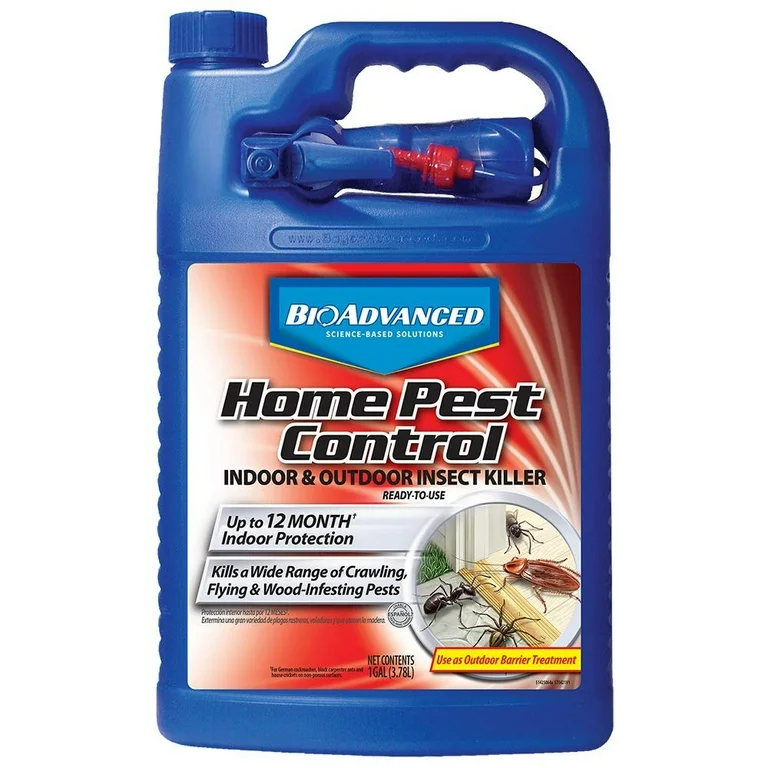A1 Bed Bug Exterminator Charlotte - Specialized Bed Bug Removal
A1 Bed Bug Exterminator Charlotte - Specialized Bed Bug Removal
Blog Article
Bed Insect Therapy Break Down: Comparing Chemical Vs. Non-Chemical Solutions
In the realm of pest control, especially when dealing with the consistent issue of bed pests, the option in between chemical and non-chemical treatment solutions can be a crucial one. Both strategies supply distinctive advantages and drawbacks, influencing aspects such as performance, safety and security considerations, and overall expense. By checking out the nuanced information of each method, a clearer understanding of which path to go after in resolving a bed bug infestation can be obtained.
Performance of Chemical Therapies
Chemical therapies for bed pest infestations have been commonly recognized for their potent and fast effectiveness in removing these insects. When considering the performance of chemical treatments, it is important to understand that they can provide a fast and thorough solution to a bed insect problem.
In addition, chemical therapies have the benefit of offering residual results, implying that they can proceed to remove bed bugs also after the first application. This residual activity is especially useful in combating any possible re-infestations. Furthermore, the rapid activity of chemical treatments can bring relief to people facing severe bed insect infestations, permitting them to restore control of their home swiftly.
Safety Problems With Chemical Solutions
One crucial aspect that calls for careful factor to consider when utilizing chemical services for bed pest treatment is making certain the security of occupants and the setting. Direct exposure to specific chemicals used in bed bug treatments can lead to breathing concerns, skin irritation, or other adverse responses, especially in individuals with pre-existing problems or sensitivities.
Moreover, the environmental influence of chemical options is one more significant factor to consider. Some pesticides made use of in bed insect therapies might be harmful to valuable insects, wildlife, and ecosystems if they leach right into the dirt or water systems. It is necessary to use chemical therapies judiciously, adhering to security guidelines, and considering much less harmful choices to alleviate these risks and guarantee the efficient and secure management of bed insect problems.
Advantages of Non-Chemical Approaches
Taking into consideration the potential security problems and environmental influence connected with chemical options for bed pest treatment, discovering non-chemical strategies presents a promising option with a number of distinctive advantages. Non-chemical approaches provide a much safer alternative for homes, particularly those with pets, kids, or people conscious harsh chemicals. These techniques eliminate the risks of direct exposure to hazardous substances, minimizing the potential for negative wellness results. Moreover, non-chemical treatments are eco-friendly, as they do not contribute to air or water air pollution, making them a lasting choice for pest control.
In addition, non-chemical remedies can be reliable in targeting bed insects, consisting of hard-to-reach locations where chemical therapies might not penetrate - A1 exterminator charlotte nc. Approaches such as heat treatment, vacuuming, steam cleaning, and cushion coverings offer thorough obliteration without the usage of unsafe chemicals.
Limitations of Non-Chemical Treatments

In addition, non-chemical therapies typically call for several applications to achieve effective elimination. This can be lengthy and find out this here may not always assure total elimination of all bed pests and their eggs, especially in concealed or hard-to-reach places.
Additionally, the success of non-chemical treatments heavily relies upon correct application and thoroughness, which can be testing for people without professional competence. Inadequate application of non-chemical methods might lead to incomplete eradication, causing relentless problems and the demand for added treatments.
As a result, while non-chemical therapies have their benefits, it is crucial to recognize these limitations and consider them when identifying the most efficient method for handling bed insect problems.
Price Contrast: Chemical Vs. Non-Chemical Options
Given the restrictions connected with non-chemical treatments, a necessary element to examine in the context of bed insect management is the cost contrast in between chemical and non-chemical alternatives. Chemical therapies usually entail the application of pesticides by specialists, which can range from $250 to $900 per room, relying on the extent of the infestation and the size of the location to be dealt with. In comparison, non-chemical treatments like warmth therapy or vapor can be pest prevention more expensive, with expenses varying from $1,000 to $6,000 for an entire home. While the initial cost of chemical treatments might seem lower, several therapies may be needed to completely eradicate the infestation, possibly enhancing the overall price. On the other hand, non-chemical choices may offer a much more green and lasting remedy, although they can be cost-prohibitive for some people. Ultimately, when thinking about the expense of bed bug treatment options, it is essential to evaluate the upfront expenditures against the effectiveness and lasting sustainability of the selected method.
Conclusion

Thinking about the prospective safety issues and environmental effect connected with chemical remedies for bed insect treatment, discovering non-chemical methods provides an encouraging choice with several distinctive benefits.Offered the constraints connected with non-chemical therapies, an important aspect to review in the context of bed bug management is the price contrast between chemical and non-chemical alternatives. In contrast, non-chemical therapies like warm treatment or vapor can be a lot more expensive, with expenses varying from $1,000 to $6,000 for an entire home. While the first price of chemical go to this web-site treatments may seem lower, several treatments may be required to completely eliminate the invasion, potentially increasing the general expense.In conclusion, when comparing chemical and non-chemical bed insect treatment choices, it is crucial to consider performance, safety, advantages, limitations, and cost.
Report this page